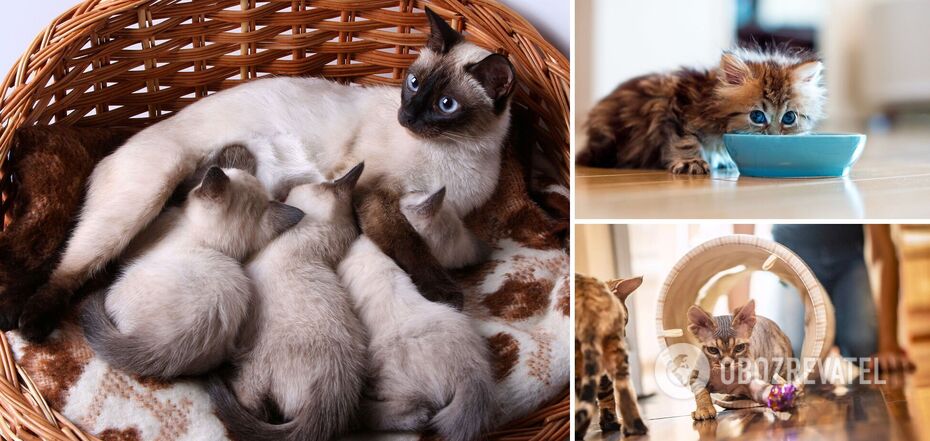Life
At what age do cats become adults: how does the breed affect
It is important to know when your cat will turn from a funny kitten into an adult animal. After all, this transition affects its feeding, some of the nuances of care, and the need for veterinary support.
OBOZREVATEL tells you how to tell when a cat is reaching adulthood. And how this is influenced by such things as breed, disease, and feeding.
A cat can be considered a fully grown cat when it reaches 12-15 months of age. But at the same time, sexual maturity in these animals occurs earlier - in cats, it can be as young as 6 months. In general, felinologists distinguish four periods of kitten growth:
- neonatal (0-3 weeks after birth);
- weaning (4-8 weeks);
- intensive growth (2-4 months);
- constant growth (from 4 months).
When an animal begins to weigh 40-50 times more than at birth, it can be said that it has reached adulthood. The development of a small cat can be influenced by such factors as
- breed;
- heredity (size of parents);
- diet;
- past illnesses.
In general, kittens are born weighing between 60-200 grams. This depends, in particular, on the number of animals in the litter - the more there are, the lower the weight of the kittens.
According to this schedule, it is necessary to adjust the animal's diet. Neonatal kittens can only be offered a flat bowl of water - the mother cat will take care of the rest. During the weaning period, they will need easily digestible food, such as special food. And during the period of intensive growth, it is important to make sure that the animal does not lack food, but does not overeat.
How breed affects the cat's maturation
In general, the pattern here is quite simple - the smaller the breed, the faster the kittens grow up. Thus, a Munchkin or Abyssinian cat can reach adulthood between 9 months and a year. Medium breeds - British, Siamese, Persian - grow up to 10-12 months. Although their physical development does not stop after that, and they can get into shape up to 2 years. Whereas a Maine Coon or Bengal cat can grow up to 15 months and get into shape up to 3 years.
How to feed a cat during the growth period
As soon as a kitten starts eating solid food, you need to start carefully monitoring its diet. First of all, it is important to choose the right diet for it - give it kitten food or well-processed, easily digestible natural foods. Feeding recommendations at this stage are as follows:
- divide the daily ration into two portions - morning and evening, they can be equal in volume, or the morning portion can be slightly larger;
- make sure that kittens do not eat after each other and other cats;
- do not give young animals food from your table;
- periodically give them age-appropriate vitamins.
What else can affect a kitten's growth
In addition to an unregulated diet, kittens can be stunted due to the presence of worms. This can be solved by taking age-appropriate antiparasitic drugs in a timely manner - they are usually separate for kittens.
Also, developmental delays or advancement can be caused by hormonal disorders and other health problems. In this case, the kitten should be taken to the vet.
Sterilisation can affect the animal's appetite and weight gain. Therefore, it is better to carry out the procedure at the appropriate age, when the cat is just forming its eating habits. Ask your veterinary clinic when and how this operation is performed.
Earlier, OBOZREVATEL told you which cat breeds are long-lived.
Subscribe to OBOZREVATEL's Telegram and Viber channels to keep up with the latest news.



























